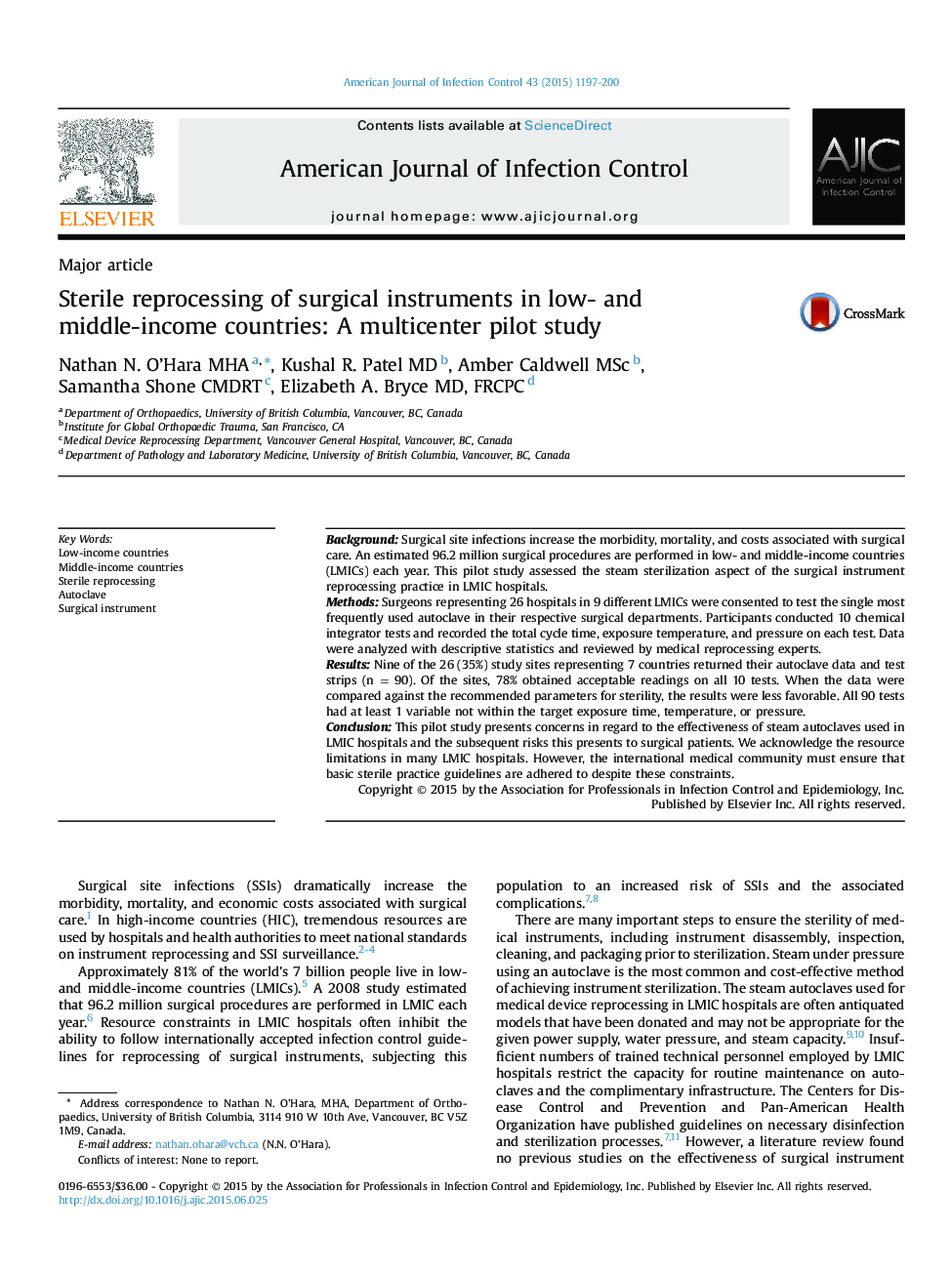| Article ID | Journal | Published Year | Pages | File Type |
|---|---|---|---|---|
| 5867139 | American Journal of Infection Control | 2015 | 4 Pages |
â¢This study assessed the instrument reprocessing practices at 9 hospitals in 7 low- and middle-income countries.â¢The study identified that the routine testing and maintenance of autoclaves is lacking in many hospitals in low- and middle-income countries.â¢The findings present concerns on the effectiveness of steam autoclaves used in the hospitals in low- and middle-income countries.
BackgroundSurgical site infections increase the morbidity, mortality, and costs associated with surgical care. An estimated 96.2 million surgical procedures are performed in low- and middle-income countries (LMICs) each year. This pilot study assessed the steam sterilization aspect of the surgical instrument reprocessing practice in LMIC hospitals.MethodsSurgeons representing 26 hospitals in 9 different LMICs were consented to test the single most frequently used autoclave in their respective surgical departments. Participants conducted 10 chemical integrator tests and recorded the total cycle time, exposure temperature, and pressure on each test. Data were analyzed with descriptive statistics and reviewed by medical reprocessing experts.ResultsNine of the 26 (35%) study sites representing 7 countries returned their autoclave data and test strips (n = 90). Of the sites, 78% obtained acceptable readings on all 10 tests. When the data were compared against the recommended parameters for sterility, the results were less favorable. All 90 tests had at least 1 variable not within the target exposure time, temperature, or pressure.ConclusionThis pilot study presents concerns in regard to the effectiveness of steam autoclaves used in LMIC hospitals and the subsequent risks this presents to surgical patients. We acknowledge the resource limitations in many LMIC hospitals. However, the international medical community must ensure that basic sterile practice guidelines are adhered to despite these constraints.
